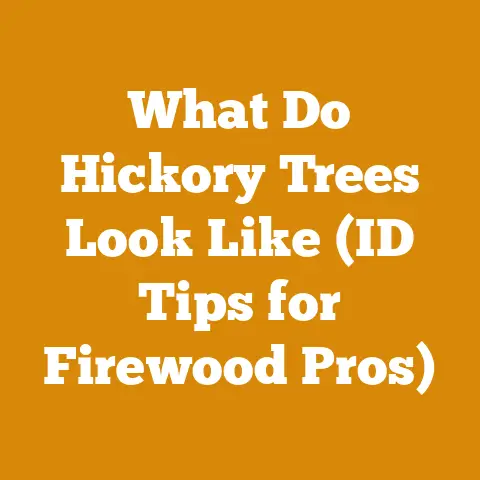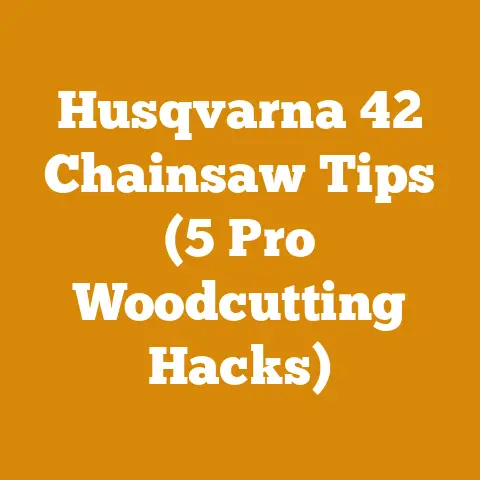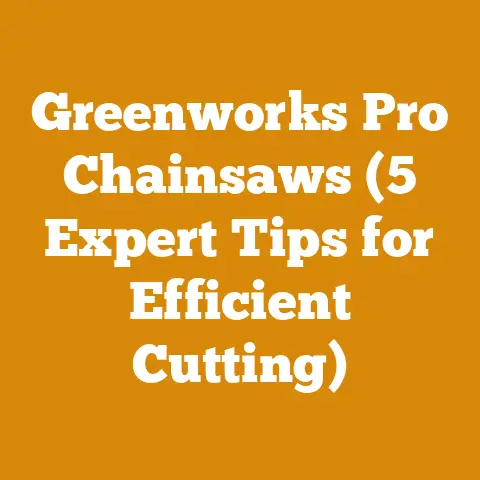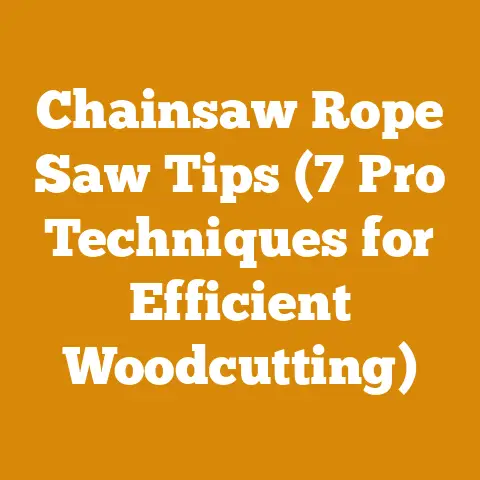Pine Tree Blight Treatment (7 Proven Fungicides for Wood Health)
Let’s face it, a diseased pine tree is more than just an eyesore; it’s a potential hazard and a loss of valuable timber or firewood. As someone who’s spent years felling trees, processing wood, and battling the elements, I know firsthand the frustration of watching a promising pine succumb to blight. Today, I want to arm you with the knowledge and strategies to combat pine tree blight effectively, all while keeping a close eye on your budget. This isn’t just about fungicides; it’s about understanding the costs, planning your approach, and protecting your investment.
Understanding Pine Tree Blight and Its Impact
Before diving into fungicides and costs, it’s crucial to understand what we’re up against. Pine tree blight, often caused by fungal pathogens, can manifest in various ways, from needle cast to stem cankers. The specific type of blight dictates the severity and the required treatment. Neglecting blight can lead to tree death, impacting timber yield, firewood production, and even property value.
Identifying Common Pine Tree Blights
- Needle Cast: Characterized by the browning and premature shedding of needles, needle cast diseases like Lophodermium needle cast are widespread.
- Diplodia Tip Blight: Primarily affects young shoots, causing stunted growth and eventual branch dieback.
- Annosum Root Rot: A soilborne fungus that attacks the roots, weakening the tree and making it susceptible to windthrow.
- Pitch Canker: Causes resinous cankers on branches and stems, leading to branch death and, in severe cases, tree mortality.
The Cost of Neglect: A Personal Anecdote
I remember one particularly harsh winter a few years back. I had a stand of young ponderosa pines I was counting on for future timber. I noticed some needle cast developing, but, foolishly, I put off treatment. I thought, “It’ll probably clear up on its own.” Big mistake. By spring, the infection had spread, and I lost a significant portion of my potential yield. The cost of those lost trees far outweighed the cost of preventative fungicide treatment. That experience taught me a valuable lesson about the importance of early detection and proactive management.
7 Proven Fungicides for Pine Tree Blight Treatment
Now, let’s get down to brass tacks. Choosing the right fungicide is paramount, but understanding the cost implications of each option is equally important. Here are seven proven fungicides often used to treat pine tree blight, along with considerations for their cost and effectiveness:
1. Copper-Based Fungicides
- Active Ingredient: Copper sulfate, copper hydroxide.
- Target Blights: Effective against a broad range of fungal diseases, including needle cast and some cankers.
- Application: Foliar sprays, soil drenches.
- Cost: Generally the most affordable option, ranging from \$10 to \$30 per gallon of concentrate.
- Pros: Relatively inexpensive, readily available.
- Cons: Can be phytotoxic to some pine species, requires frequent application, potential for copper buildup in soil.
Cost Breakdown:
| Item | Estimated Cost | Notes |
|---|---|---|
| Copper-based Fungicide (1 gal concentrate) | \$10 – \$30 | Price varies by brand and concentration. |
| Sprayer Rental (per day) | \$25 – \$50 | Depending on size and type (handheld, backpack, or tractor-mounted). |
| Personal Protective Equipment (PPE) | \$20 – \$50 | Gloves, eye protection, respirator. |
| Total Estimated Cost | \$55 – \$130 + Labor | Labor costs are highly variable, as I’ll discuss later. |
2. Chlorothalonil
- Active Ingredient: Chlorothalonil.
- Target Blights: Effective against needle cast, tip blight, and other foliar diseases.
- Application: Foliar sprays.
- Cost: Moderate, typically \$30 to \$60 per gallon of concentrate.
- Pros: Broad-spectrum, relatively long-lasting protection.
- Cons: Potential for resistance development, environmental concerns, requires careful application.
Cost Breakdown:
| Item | Estimated Cost | Notes |
|---|---|---|
| Chlorothalonil Fungicide (1 gal concentrate) | \$30 – \$60 | Price varies by brand and concentration. |
| Sprayer Rental (per day) | \$25 – \$50 | Depending on size and type. |
| Personal Protective Equipment (PPE) | \$20 – \$50 | Gloves, eye protection, respirator. |
| Total Estimated Cost | \$75 – \$160 + Labor | Always read and follow label instructions carefully. |
3. Propiconazole
- Active Ingredient: Propiconazole.
- Target Blights: Effective against needle cast, rust diseases, and some stem cankers.
- Application: Foliar sprays, soil injections.
- Cost: Moderate to high, ranging from \$50 to \$100 per gallon of concentrate.
- Pros: Systemic action (absorbed by the plant), provides longer-lasting protection.
- Cons: Can be more expensive than other options, potential for resistance development, requires specialized application equipment for soil injections.
Cost Breakdown:
| Item | Estimated Cost | Notes |
|---|---|---|
| Propiconazole Fungicide (1 gal concentrate) | \$50 – \$100 | Price varies by brand and concentration. |
| Sprayer Rental/Soil Injector (per day) | \$30 – \$75 | Soil injectors are more expensive to rent. |
| Personal Protective Equipment (PPE) | \$20 – \$50 | Gloves, eye protection, respirator. |
| Total Estimated Cost | \$100 – \$225 + Labor | Consider the cost of training if you’re unfamiliar with soil injection techniques. |
4. Myclobutanil
- Active Ingredient: Myclobutanil.
- Target Blights: Effective against rust diseases, scab, and some foliar diseases.
- Application: Foliar sprays.
- Cost: Moderate to high, similar to propiconazole.
- Pros: Systemic action, good protectant and curative properties.
- Cons: Potential for resistance development, limited effectiveness against some pine blight pathogens.
Cost Breakdown:
| Item | Estimated Cost | Notes |
|---|---|---|
| Myclobutanil Fungicide (1 gal concentrate) | \$50 – \$100 | Price varies by brand and concentration. |
| Sprayer Rental (per day) | \$25 – \$50 | Depending on size and type. |
| Personal Protective Equipment (PPE) | \$20 – \$50 | Gloves, eye protection, respirator. |
| Total Estimated Cost | \$95 – \$200 + Labor | Accurate application is crucial for optimal results. |
5. Azoxystrobin
- Active Ingredient: Azoxystrobin.
- Target Blights: Broad-spectrum fungicide effective against a wide range of fungal diseases.
- Application: Foliar sprays, soil drenches.
- Cost: High, generally \$80 to \$150 per gallon of concentrate.
- Pros: Broad-spectrum, systemic action, can improve plant health.
- Cons: High cost, potential for resistance development.
Cost Breakdown:
| Item | Estimated Cost | Notes |
|---|---|---|
| Azoxystrobin Fungicide (1 gal concentrate) | \$80 – \$150 | Price varies by brand and concentration. |
| Sprayer Rental (per day) | \$25 – \$50 | Depending on size and type. |
| Personal Protective Equipment (PPE) | \$20 – \$50 | Gloves, eye protection, respirator. |
| Total Estimated Cost | \$125 – \$250 + Labor | Consider the long-term benefits of improved plant health when evaluating the cost. |
6. Mancozeb
- Active Ingredient: Mancozeb.
- Target Blights: Protectant fungicide effective against a wide range of fungal diseases, including needle cast.
- Application: Foliar sprays.
- Cost: Relatively inexpensive, similar to copper-based fungicides.
- Pros: Broad-spectrum, good protectant activity.
- Cons: Requires frequent application, potential environmental concerns, not effective against all pine blight pathogens.
Cost Breakdown:
| Item | Estimated Cost | Notes |
|---|---|---|
| Mancozeb Fungicide (1 gal concentrate) | \$10 – \$30 | Price varies by brand and concentration. |
| Sprayer Rental (per day) | \$25 – \$50 | Depending on size and type. |
| Personal Protective Equipment (PPE) | \$20 – \$50 | Gloves, eye protection, respirator. |
| Total Estimated Cost | \$55 – \$130 + Labor | Frequent applications will increase the overall cost. |
7. Biological Fungicides
- Active Ingredient: Bacillus subtilis, Trichoderma species.
- Target Blights: Some formulations can help suppress fungal growth and improve plant health.
- Application: Foliar sprays, soil drenches.
- Cost: Varies widely, from \$20 to \$80 per gallon of concentrate.
- Pros: Environmentally friendly, can improve soil health.
- Cons: May not be as effective as synthetic fungicides, requires specific application conditions.
Cost Breakdown:
| Item | Estimated Cost | Notes |
|---|---|---|
| Biological Fungicide (1 gal concentrate) | \$20 – \$80 | Price varies significantly depending on the specific product and concentration. |
| Sprayer Rental (per day) | \$25 – \$50 | Depending on size and type. |
| Personal Protective Equipment (PPE) | \$20 – \$50 | Gloves, eye protection (respirator may not be necessary, but check the label). |
| Total Estimated Cost | \$65 – \$180 + Labor | Research the specific biological fungicide to ensure it targets the blight affecting your pines. |
Important Note: These cost estimates are based on averages and can vary depending on your location, supplier, and the specific product you choose. Always compare prices and read product labels carefully before making a purchase.
Breaking Down the Cost Factors: A Deep Dive
Choosing the right fungicide is only half the battle. Understanding the various cost factors involved in treatment is crucial for effective budgeting. Let’s break down these factors in detail:
1. Fungicide Costs
As we’ve seen, fungicide prices vary significantly. Consider the following:
- Concentration: Higher concentration products may seem more expensive upfront, but they can be more cost-effective in the long run as they require less product per application.
- Coverage: Determine how much area a gallon of concentrate will cover. This will help you calculate the total amount of fungicide you need.
- Discounts: Look for bulk discounts or seasonal sales.
Data Point: According to a recent survey by the USDA, the average cost of fungicides for forestry applications ranges from \$15 to \$75 per acre, depending on the product and application rate.
2. Labor Costs
Labor costs can be a significant expense, especially if you’re hiring professionals. Consider these factors:
- Hourly Rate: The average hourly rate for forestry workers ranges from \$15 to \$30, depending on experience and location.
- Time Required: Estimate the time required to prepare the fungicide solution, apply it to the trees, and clean up afterward. This will depend on the size of the area you’re treating and the number of trees.
- Complexity: Soil injections and other specialized application techniques may require more skilled labor and therefore higher costs.
My Experience: I’ve found that hiring a local arborist for specialized applications, like soil injections, is often worth the investment. They have the expertise and equipment to ensure the job is done correctly and efficiently.
3. Equipment Costs
You’ll need the right equipment to apply the fungicide effectively. Consider these options:
- Sprayers: Handheld sprayers are suitable for small areas, while backpack sprayers are better for larger areas. Tractor-mounted sprayers are the most efficient option for large-scale applications.
- Soil Injectors: Specialized equipment is required for soil injections.
- Personal Protective Equipment (PPE): Gloves, eye protection, and respirators are essential for protecting yourself from exposure to fungicides.
Cost-Saving Tip: Renting equipment can be a cost-effective option if you only need it for a short period. Compare rental rates from different suppliers before making a decision.
4. Permits and Regulations
In some areas, you may need permits to apply fungicides, especially near waterways or protected areas. Check with your local authorities to determine if any permits are required.
Data Point: Failure to comply with local regulations can result in fines and other penalties.
5. Travel Costs
Don’t forget to factor in travel costs to and from the treatment site. This includes fuel, vehicle maintenance, and any lodging expenses if you’re traveling a long distance.
6. Contingency Funds
It’s always a good idea to set aside a contingency fund to cover unexpected expenses. Aim for at least 10% of your total budget.
Creating a Realistic Budget: A Step-by-Step Guide
Now that we’ve covered the cost factors, let’s create a realistic budget for pine tree blight treatment. Here’s a step-by-step guide:
- Assess the Problem: Identify the type of blight affecting your trees and the extent of the infection.
- Choose the Right Fungicide: Select a fungicide that is effective against the specific blight and suitable for your budget and application capabilities.
- Calculate the Amount of Fungicide Needed: Determine the area you need to treat and the application rate of the fungicide.
- Estimate Labor Costs: Decide whether you’ll do the work yourself or hire professionals. If hiring professionals, get quotes from multiple sources.
- Factor in Equipment Costs: Determine whether you’ll rent or purchase the necessary equipment.
- Account for Permits and Regulations: Check with your local authorities to determine if any permits are required.
- Include Travel Costs: Estimate travel costs to and from the treatment site.
- Add a Contingency Fund: Set aside at least 10% of your total budget for unexpected expenses.
- Total the Costs: Add up all the estimated costs to arrive at your total budget.
Example Budget:
Let’s say you have 1 acre of land affected by needle cast and you’ve chosen to treat it with chlorothalonil. Here’s a sample budget:
| Item | Estimated Cost |
|---|---|
| Chlorothalonil Fungicide | \$50 |
| Sprayer Rental | \$40 |
| Personal Protective Equipment | \$30 |
| Labor (8 hours @ \$20/hour) | \$160 |
| Travel Costs | \$20 |
| Contingency Fund (10%) | \$30 |
| Total Estimated Cost | \$330 |
Cost Optimization Strategies: Saving Money Without Sacrificing Effectiveness
Treating pine tree blight can be expensive, but there are several strategies you can use to optimize costs without sacrificing effectiveness:
- Early Detection and Treatment: The earlier you detect and treat blight, the less fungicide you’ll need and the lower your overall costs will be.
- Preventative Measures: Implementing preventative measures, such as proper pruning and fertilization, can help reduce the risk of blight in the first place.
- Targeted Application: Apply fungicide only to the affected trees or areas, rather than treating the entire area.
- Proper Application Techniques: Follow the fungicide label instructions carefully to ensure proper application and maximize effectiveness.
- Integrated Pest Management (IPM): Use an IPM approach that combines cultural practices, biological controls, and chemical treatments to manage blight effectively and minimize fungicide use.
- Group Purchasing: Consider joining forces with neighbors or other landowners to purchase fungicides in bulk and save money.
- Government Assistance Programs: Explore whether there are any government assistance programs available to help offset the cost of blight treatment.
My Insight: I’ve found that regular monitoring of my pine trees is the most effective way to detect blight early. I walk through my stands at least once a month, looking for signs of disease. This allows me to catch problems early and treat them before they become widespread.
The Long-Term Investment: Protecting Your Woodlot’s Future
Treating pine tree blight is an investment in the long-term health and productivity of your woodlot. By protecting your trees from disease, you’re ensuring a future supply of timber, firewood, and other valuable resources.
Data Point: A healthy woodlot can increase property value by as much as 20%.
The Bottom Line: Don’t let pine tree blight ruin your investment. By understanding the costs involved, creating a realistic budget, and implementing cost optimization strategies, you can effectively protect your trees and ensure a healthy and productive woodlot for years to come.
Actionable Takeaways and Next Steps
- Identify the Blight: Determine the specific type of blight affecting your pine trees.
- Research Fungicides: Compare different fungicides and choose the one that is most effective and affordable for your situation.
- Create a Budget: Develop a detailed budget that includes all the costs involved in treatment.
- Implement a Treatment Plan: Follow your budget and treatment plan carefully to ensure effective blight control.
- Monitor Your Trees: Regularly monitor your trees for signs of disease and take action quickly if you notice any problems.
By taking these steps, you can protect your pine trees from blight and ensure a healthy and productive woodlot for years to come. Don’t let the cost of treatment deter you. Think of it as an investment in the future of your woodlot and the value it provides. Now, get out there and protect those pines!






